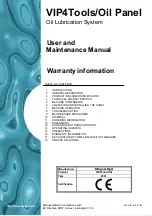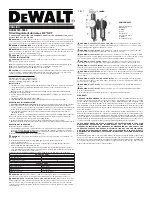
PROTECTION & SAFETY
47
2020/06 - Indice de révision : A - Code : 34560
9.
Specific precautions
9.1.
Beam and duckboarding
The cover beam and PVC or wooden duckboarding must always be left free of any obstruction, to allow quick
and easy access to the cover pit or extension.
The maximum load permitted on duckboarding resting on a beam is 80 Kg/m².
Use of the beam and/ or duckboarding as a diving board or path to enter or exit the pool, or placing of a load
heavier than 80 Kg/m² on the beam/ duckboarding assembly, is therefore strictly prohibited.
9.2.
Cover apron
The slats comprising the cover apron, irrespective of their colour, must always remain in contact with the pool
water in order to sink the heat generated by the slat apron when exposed to sunlight.
Failing this, the cover can overheat, which could lead to the instant and irreversible deformation of the cover
slats.
The filtration system of pools fitted with covers equipped with translucent slats, must be left running during times
of maximum sun intensity.
In the event that the pool is drained, every precaution must be taken to protect the slats from the sun and/or
excessive heat.
9.3.
Pit wall
As of the 1
st
of January 2004, the standard NF P90-308 requires the presence of a pit wall between the pit in
which a submerged cover is installed and the rest of the pool.
10.
Scope of use
The automatic covers were designed and manufactured for use with family pools. Any other use (public or semi-
public pools) must be duly authorised by Procopi.
Despite their excellent mechanical properties, the automatic covers cannot withstand external aggressions.
The following should therefore be avoided:
‐
Direct contact between the surface of the cover apron and disinfectant products (Chlorine, Bromine,
etc.) likely to cause damage such as permanent discolouration, burns, blisters, etc.
‐
Excessive loads on the cover apron that could deform it.
‐
Mechanical impacts: blunt objects falling onto the cover apron, the base of a parasol, heavy hail
stones, etc.
We recommend that you contact your insurance company to check if your automatic cover is covered against
the risk of hail.
Furthermore, the leaktightness of the slats comprising the cover apron is key to cover protection. This
leaktightness can be compromised by mechanical impacts, hail storms, etc.
Consequently, the leaktightness of the slats must be checked regularly by a responsible adult user and any
defects should be repaired immediately.
This list of precautions is not exhaustive and we highly recommend that, in case of doubt, you do nothing without
first seeking the advice of the installer, with whom you should remain in frequent contact.














































